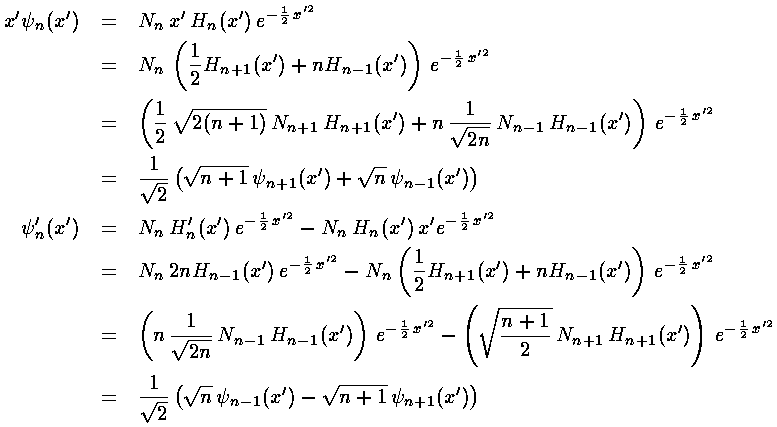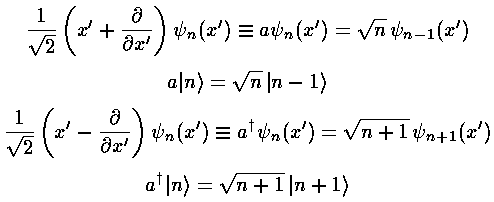
xPn(x) = anPn+1(x) + bnPn(x) + cnPn-1(x)
In the case of polynomials with definite even/odd parity, bn=0 (why?). For Hermite polynomials we have:
x Hn(x) = ½ Hn+1(x) + n Hn-1(x)
All the classical orthogonal polynomials satisfy equations like:
an(x) P'n(x) = bn(x) Pn(x) + cn(x) Pn-1(x)
For Hermite polynomials we have:
H'n(x) = 2n Hn-1(x)
Since

we can relate the results of simple operations on an eigenfunction in terms of other eigenfunctions

By themselves these results are useful, e.g., to calculate integrals like: <n|x'2|n> or <n|p2|n>, but they find their most common use by combining the results into raising and lowering operators:

We note the following properties of the raising and lowering operators:
